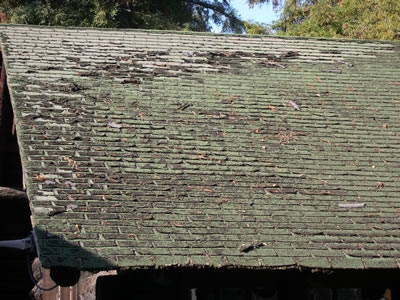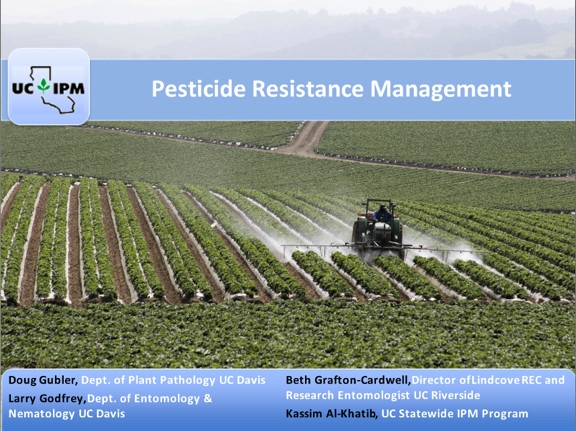Posts Tagged: resistance
Insecticide resistance in alfalfa: the basics, why it matters, and what can you do?
Insecticide resistance in alfalfa weevils is spreading across California Insecticide resistance is “alive and well” in alfalfa....
Controlling Alfalfa Weevils in the Intermountain Area with Pyrethroid Resistance
Picture 1: Adult alfalfa weevil Alfalfa weevils, key pests of alfalfa hay, have been showing pyrethroid insecticide resistance within the...
New online course helps PCAs manage pesticide resistance
Pesticide resistance is not a new subject, and researchers have been working for years on how to manage the problem. Resistance develops when the same type of pesticide is used repeatedly and frequently to control a pest. Every pest population contains individuals that vary genetically in some way; some vary in their susceptibility to being killed by a particular pesticide.
When a pesticide is applied, some individual insects or weeds are killed and others are not. The individuals that are not killed vary genetically from the ones that were killed, and when they reproduce, their offspring are also likely not to be susceptible to the pesticide. Over time, the population changes and you are left with the genetically resistant individuals as the majority of the population. Resistant pests can result in higher pesticide rates being applied and more frequent applications. We see resistance occurring in weeds, insects and pathogens.
Pest control advisers and growers are often the first to see what is going on in the field. After a pesticide is applied, they may be the first to report back to researchers if the application was effective or not. If they see patterns of decreased susceptibility of a pest population to a pesticide that was previously effective at controlling the pest, they may conclude that resistance is occurring. Pesticide resistance is the topic of a new online course developed by UC IPM that can help PCAs and other licensed pesticide applicators recognize resistance when it is occurring, discover how it developed, apply practical methods of managing it and delay its occurrence.
The new online course covers resistance within the disciplines of plant pathology, entomology and weed science. It is based on a series of workshops on resistance management held in Davis, Fresno and at the UC Kearney Agricultural Research and Extension Center during the spring of 2014 presented by UC Cooperative Extension specialists Doug Gubler (Dept. of Plant Pathology, UC Davis.), Larry Godfrey (Dept. of Entomology and Nematology, UC Davis), Beth Grafton-Cardwell (Lindcove Research and Extension Center and UC Riverside Dept. of Entomology), and Kassim Al-Khatib (UC Statewide IPM Program).
There are several mechanisms through which pests become resistant to pesticides. One mechanism common to all three disciplines is target site alteration, where the site a pesticide normally attacks is somehow altered and no longer allows a pesticide to bind and affect the pest. Metabolic resistance is another mechanism, where pests detoxify or break down the chemical before it can work.
Although some differences occur in delaying or managing resistance across the disciplines, the key is to try to avoid intensive applications of pesticides so as not to allow resistant pests to become the majority of the population. Good IPM practices can reduce the need for pesticide applications. Rotating chemicals with different modes of action can also help manage resistance.
For an in-depth look at pesticide resistance, check out the new course at http://www.ipm.ucanr.edu/training/pesticide_resistance.html. This course has been approved for two continuing education units in the “Other” category from the Department of Pesticide Regulation.
Chron helps distribute UC fire information
The Sweat Equity column in the San Francisco Chronicle today steered readers to a UC PowerPoint presentation on the Web that provides details on fire-resistance ratings for roofs.
Produced by UC Cooperative Extension wood durability advisor Steven Quarles, the 18-slide presentation gives viewers an understanding of how roof coverings get their fire rating.
The information in Sweat Equity, a regular home improvement column written by brothers Bill and Kevin Burnett, was prompted by a reader question about whether an existing shake roof can be treated for improved fire resistance. In short, the answer is no.
Roofing systems are fire-rated either A, B, C or not ratable, with A the highest rating, or most fire resistant, according to the article.
If homeowners wish to preserve the woodsy and casual appearance of a wood shake roof, the Burnetts said the existing shakes should be replaced with new fire-retardant pressure-treated wood shakes. Alone, the pressure-treated shakes result in a class-B roof covering; in conjunction with an underlying fire barrier material, such as this gypsum or fiberglass, the roof is class A.
For more information on improving homes' fire resistance, see Quarles' Homeowners Wildfire Mitigation Guide online.

When new, an asphalt composition roof has a class A rating.


